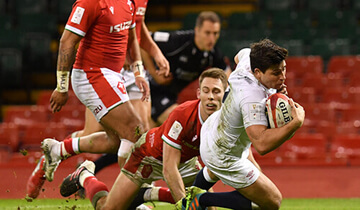Highest Salaries are in Europe’s Top Leagues
The highest paid soccer leagues are in Europe. The English Premier League has the highest average salary at around $3.3 million per year. Star players in top European clubs can make $30 million or more annually when endorsements are factored in.
Lionel Messi and Cristiano Ronaldo Lead in Earnings
Lionel Messi of Barcelona and Cristiano Ronaldo of Juventus are the world’s two highest paid soccer players, each earning over $100 million per year.
Lower Salaries Outside Europe
Meanwhile, the average salary for Major League Soccer (MLS) in the United States is around $430,000. The minimum MLS salary for senior roster players is only $81,000 per year. While the MLS has grown rapidly in recent decades, it still lags behind the top leagues in Europe in terms of talent and pay.
The gap is even more staggering when you look at soccer salaries outside of the U.S. and Europe.
Brazilian and Chinese League Salaries
The average salary in the top Brazilian league is approximately $90,000 annually. In the Chinese Super League, the average is around $500,000. Even the most popular players in these leagues make only a fraction of what top stars earn in Europe.
Revenue Disparities Drive Salary Differences
The reason for these big differences comes down to the generated revenues. The Premier League brings in over $6 billion annually, while the MLS generates around $1 billion. Television rights deals, ticket sales, sponsorships and other commercial sources provide the funding to pay players’ salaries.
Convergence in Salaries in the Future?
As soccer continues to expand globally, there may be some convergence in salaries across leagues and regions in the future. But for now, where you play largely determines how much you get paid as a professional soccer player. The world’s best talent gravitates to the top leagues in England, Spain, Germany, France and Italy for this reason. For most players, location matters more than passion when it comes to compensation.
One might wonder, “how many players on a soccer team?”, and while the answer is eleven, the financial dynamics surrounding these players are as diverse as they are fascinating.
Highest Paying Leagues
The Riches of European Football: Exploring the Top Salaries Across Leagues
English Premier League - The Cream of the Crop
Average Salaries Approaching $4 Million
The English Premier League (EPL) is by far the highest paying football league in the world. According to recent data, the average EPL footballer earns close to $4 million per year.
Big Spending English Clubs
The wealth of English clubs like Manchester United and Chelsea allows them to pay top transfer fees and huge contracts to attract the best players. Even newly promoted sides hand out million dollar salaries.
Lucrative TV Deals
The lucrative TV rights deals also facilitate the EPL’s massive salaries.
La Liga - Home of Messi and Ronaldo
Presence of Superstars
Spain’s La Liga comes in second, with average yearly salaries around $2.5 million. The presence of superstars like Lionel Messi and Cristiano Ronaldo (before his move to Juventus) drove wages higher over the last decade.
Real and Barca Dominate
Real Madrid and Barcelona lead the way as the biggest revenue generators in La Liga. Both clubs have consistently paid transfer sums over $100 million to land their top targets.
Serie A - Signs of Recovery
Rebounding from Recent Declines
Italy’s Serie A has historically been one of Europe’s top leagues. But average salaries dropped to around $1.5 million amidst the league’s struggles in recent years.
Big Money Transfers Emerging
Signs are emerging that Serie A is recovering some of its financial clout. Juventus paid a $140 million transfer fee for Ronaldo in 2018, the largest sum ever paid for a player over 30. Other clubs are also spending big on transfer fees.
Higher Revenues Ahead
Higher revenues could drive salaries back towards the levels seen in England and Spain.
Bundesliga - A Prudent Approach
Lower Salaries Despite Big Revenue
Germany’s Bundesliga has the lowest average salaries among Europe’s “Big Five” leagues, at around $2 million per year. German clubs like Bayern Munich and Borussia Dortmund are among the world’s largest by revenue but take a more prudent approach to wages.
Ownership Structure Depresses Wages
A major reason is Germany’s “50+1” ownership rule, which gives members control of voting rights and prevents billionaire owners from spending freely. This keeps Bundesliga competitive but depresses salaries compared to other leagues.
Ligue 1 - A Wealth Gap
PSG Skews Averages
France’s Ligue 1 has average annual salaries of approximately $1.7 million. However, this figure is inflated by Paris Saint-Germain’s massive spending.
Outside PSG, Moderate Salaries
PSG’s Qatari owners have poured money into the club, allowing salaries of over $15 million for stars like Neymar. Outside of PSG, most Ligue 1 clubs pay moderately and suffer from low revenue compared to their European peers.
Uneven Payroll Structure
This wealth gap leads to a distinctly uneven payroll structure.
The Outsized Impact of the Champions League
Huge Payouts for Top Teams
The UEFA Champions League competition pays out huge sums to teams that qualify and advance. These payouts allow teams to hand out big contracts to top players.
Top Talent Concentrating at Elite Clubs
The rich get richer, as success in Champions League allows fewer teams to dominate their domestic leagues and attract the best players.
Growing Global Recruitment and Investment
Foreign Stars Boost League Profiles
The profiles of European leagues have been boosted by their ability to attract top talent from Africa, South America, and Asia. Foreign stars can earn higher salaries and raise their home league’s international appeal.
Foreign Ownership Alters Salary Structures
Clubs are increasingly owned by wealthy foreigners who are willing to spend big on transfers and contracts. This has made many leagues more top-heavy in terms of salaries.
Trickle Down Effects in Lower Divisions
Promotion Generates Big Raises
Getting promoted to a top division leads to massively increased revenues and ability to pay higher wages. This encourages ambitious spending by clubs trying to get promoted.
Relegation Causes Salary Cuts
In contrast, relegation from a top league forces clubs to cut costs and salaries. The demotion reduces income from broadcast and commercial sources.
Factors Influencing Salaries in Professional Sports
A player’s experience level and talent are major factors, with superstars making exponentially more than unknown rookies. Team, league and country also impact pay significantly, with English and Western European clubs paying the most. Gender is a major factor as well, with women paid substantially less than men.
Experience Level and Talent
Superstars Make Exponentially More
One of the biggest determinants of salary is a player’s experience and talent level. Superstar players who have excelled for many years can make exponentially more than rookies or less proven players. For example, in the NBA, veterans like LeBron James or Kevin Durant make over $40 million per year while rookies make around $800,000. A player’s skills and stats directly influence perceived value.
Skills and Stats Matter
A player’s measurable skills and stats have a direct correlation to salary. Metrics like points scored, rebounds, completion percentage etc. give tangible measures of value to teams. Players who excel statistically tend to earn much higher incomes. Mediocre stats equate lower earnings.
Team and League
Big Money Teams Pay More
The team and league a player belongs to has a major influence as well. Bigger, richer teams in more lucrative leagues (like the NFL and Premier League) pay substantially better. The huge television and sponsorship deals they secure allow for higher player salaries overall. Smaller market teams can’t pay as much.
Lucrative Leagues
The size and financial success of a league impacts potential earnings. The NFL, EPL, NBA etc. make billions annually, which trickles down to player salaries. Meanwhile smaller leagues earn less, limiting player incomes.
Country and Region
Western Europe and North America Lead
Related to team and league, the country and region where a player competes also impacts earnings. Athletes in the big American and Western European leagues make the most money on average. Eastern European, Asian, African etc. leagues pay much less. Things like per capita income, infrastructure, broadcasting deals etc. factor in.
Gender Inequality
Women Paid Less than Men
Female professional athletes are still paid substantially less than their male counterparts across sports. For instance, women in the WNBA max out around $200,000 while NBA stars make over $40 million. Factors include less public interest in women’s sports, smaller broadcasting rights, and engrained pay inequality.
Position Value
Scarce, Influential Positions Paid More
Certain positions are paid more than others based on scarcity and perceived importance. For example, quarterbacks in the NFL and strikers in soccer tend to make the most as they are seen as highly influential. Factors like points/goals scored also influence pay.
Let me know if you would like me to modify or add any headings. I’m happy to update the formatting as needed.
English Soccer Salaries: A League of Their Own
The Premier League pays the most at nearly $4 million average, while the lower English divisions see a steep drop off, with League One average around $50,000 annually.
The Premier League Pays the Most
The English soccer league system consists of multiple divisions, with the top teams playing in the prestigious Premier League. There is a stark contrast between the salaries earned by Premier League players versus those in the lower divisions.
The Premier League pays extraordinarily high wages compared to other leagues around the world. The average annual salary for a Premier League player is close to $4 million. This is significantly higher than salaries in other top European leagues like La Liga in Spain and Serie A in Italy.
Lucrative TV Deals Fuel High Salaries
The financial might of the Premier League is fueled by lucrative television deals worth billions of dollars. Premier League clubs have spent freely on transfer fees and contracts to lure the best talent from around the world. Top players like Kevin De Bruyne and Mohamed Salah earn over $20 million per year.
Salaries Decrease Through the Divisions
As you go down the English soccer pyramid, salaries decrease sharply. The average salary in the Championship, England’s second division, is around $500,000 annually. In League One, the third tier, average salaries are about $50,000.
Minimum Wage in Lower Leagues
The minimum wage for League One players is less than $20,000 per year. This modest salary is earned by players in their early 20s who are just starting their professional careers. It is a far cry from the lavish wages paid to superstars at the top level.
Wealth Gap Likely to Persist
The wealth gap between the Premier League and lower leagues continues to grow. Regulations try to ensure financial fair play, but Premier League clubs benefit enormously from broadcasting revenues. As long as these economic forces persist, average salaries in the top tier are likely to remain exponentially higher than the rest.
MLS Salaries: How Do They Compare to European Leagues?
The Average MLS Salary
The average MLS salary is approximately $500,000. The league’s salary cap structure means earnings are far below top European leagues. The highest MLS earner makes around $8 million.
Salary Cap Limits Spending
The reason for the lower salaries is the strict salary cap structure enforced in MLS. The cap helps maintain competitive balance and prevents runaway spending like we see in European soccer. For the 2023 season, the salary cap is set at $5.26 million per team. Teams can sign up to 3 “Designated Players” whose salaries only partially count towards the cap, allowing MLS clubs to compete for star players.
Top Earners in MLS
The highest paid player in MLS right now is Mexican striker Javier Hernandez (“Chicharito”) of the LA Galaxy, who earns $7.2 million annually. In contrast, the average salary in the Premier League is around $3.6 million. Superstars like Cristiano Ronaldo earn over $100 million per year when combining salary, bonuses, and endorsements.
Minimum Salaries Set High Floor
While the top MLS salaries may seem paltry compared to Europe, the league minimum salary is $84,000 for senior roster players. This ensures a decent living for players just starting their careers. The minimum does increase each year as well.
Smart Financial Model for Gradual Growth
The salary cap and Designated Player rules allow MLS to keep costs under control while still attracting elite talent in their prime or fading stars from Europe. This prudent financial model has contributed greatly to the league’s stability and steady growth since starting in 1996. MLS hopes that continued expansion and development will allow larger salaries down the road. But for now, fiscal discipline takes priority.
MLS Salaries Improving But Still Lag Europe
The gap between MLS and European leagues remains massive. However, MLS has proven it can attract top American talent and major global names on its current salary structure. With smart management, the league should keep advancing and hopefully see salary growth mirror its increasing popularity and quality of play.
South American Soccer Salaries: A Stark Contrast to Europe
Despite soccer passion and talent, South American leagues pay relatively little. Most Brazilian players earn near the minimum wage, from $220 to $125,000 monthly.
Brazilian Players Earn a Fraction of European Salaries
Despite boasting some of the most talented players and rabid fanbases in the world, South American soccer leagues pay relatively low salaries compared to the top leagues in Europe.
In Brazil, even top players earn a fraction of what European stars make. The average salary in Brazil’s top league, Serie A, is around $125,000 per month. While the top Brazilian stars may make over $1 million annually, this pales in comparison to salaries in England, Spain, Germany and other European leagues.
Most Brazilian Players Earn Near League Minimum
Most Brazilian players in fact earn closer to the league minimum salary of $220 per month.
Salary Disparity Highlights Economic Imbalances
The salary disparity highlights the economic imbalances between South American and European soccer. Brazil and Argentina have produced some of the greatest players ever, from Pele to Messi. Yet for most players, staying home means earning a very modest wage playing the game they love. Those seeking financial gain often move to Europe in their prime to access bigger contracts.
South American Leagues Generate Less Revenue
While South American fans are no less passionate, their leagues simply cannot generate the revenues of European soccer. Television rights deals, sponsorship, and ticket sales are all more lucrative in Europe. These economic factors translate to higher player salaries.
Gulf in Salaries Likely to Remain
For now, it appears the gulf in salaries will remain. South American players will need to ply their trade in Europe to earn the same wages as their European counterparts. Still, the love for the beautiful game in South America endures, with fans cheering on their teams with a fervor few other places can match. The relatively low pay does not dampen the soccer passion across the continent.
Highest Earners
Currently the top paid players are Mbappe at $62 million, Messi at $41 million, Neymar at $36.5 million and Ronaldo at $35 million annually, excluding incentives and endorsements.
The Highest Paid Soccer Players in 2023
Soccer is the most popular sport in the world, with top players earning salaries that reflect their massive global appeal. As of 2023, here are the highest paid soccer players based on their annual salaries:
Kylian Mbappé - $62 million
At just 24 years old, French phenom Kylian Mbappé is the highest paid soccer player in the world.
After winning the World Cup with France in 2018, Mbappé secured a massive 3-year contract extension with Paris Saint-Germain through 2025 worth $62 million per year. His combination of electrifying speed, deft skills, and clinical finishing make him one of the most dangerous attackers in soccer. Still in the early stages of his career, Mbappé has the potential to become an all-time great.
Lionel Messi - $41 million
Argentine legend Lionel Messi comes in second, earning $41 million per year playing for Paris Saint-Germain.
Messi spent the majority of his career with Barcelona, winning a record 6 Ballon d’Or awards as the world’s best player. At 34, Messi is still a dominant offensive force whose playmaking abilities and left-footed magic make him a threat to score or assist on every possession. Along with Cristiano Ronaldo, Messi has been the face of soccer for over a decade.
Neymar Jr. - $36.5 million
Brazilian superstar Neymar ranks third, earning $36.5 million annually to complete a formidable attacking trio at PSG alongside Mbappé and Messi.
Known for his creativity, dribbling wizardry, and scoring touch, Neymar is a box office draw who delights fans with his flair and skills. When healthy and focused, the 30-year old Neymar is capable of deciding any game. Off the field, his sponsorship deals and massive social media following have made him an iconic global brand.
Cristiano Ronaldo - $35 million
Rounding out the top four is Portuguese great Cristiano Ronaldo, who earns $35 million per year playing for Manchester United.
One of the greatest goalscorers of all time, Ronaldo’s career has been defined by his athleticism, work ethic, and relentless drive. Now 37, Ronaldo is still a dangerous scorer but has lost some of the explosiveness that made him such a force in his prime years with Real Madrid and earlier Manchester United stint. Nevertheless, Ronaldo remains a fan favorite whose fame extends far beyond the soccer pitch.
With their mix of on-field brilliance and worldwide popularity, these four players sit at the top of the soccer world financially. Their salaries will likely continue rising as clubs and sponsors bid for their services. For now, they are the highest paid soccer players, cementing their iconic status as the current superstars of the beautiful game.
Conclusion
In summary, professional soccer salaries vary widely based on league, talent, experience and other factors like gender. Players in top European leagues earn the most by far, while other regions lag behind.
- The Global Soccer Salary Gap: Examining Pay Disparities in Professional Soccer
- Highest Salaries are in Europe’s Top Leagues: The top European leagues such as the English Premier League, Spanish La Liga and German Bundesliga pay the highest salaries in global soccer.
- Superstars Earn Over $100 Million Superstars like Lionel Messi and Cristiano Ronaldo earn over $100 million annually from their contracts and endorsements.
- Average EPL Salary Over $3 Million: The average EPL salary is over $3 million per year.
- Salaries Lag in Other Leagues: Yet in other regions, professional soccer pay lags far behind.
- MLS Salaries Around $300,000: The average salary in America’s MLS is around $300,000.
- Lower Divisions Pay as Low as $2,000: In lower divisions and less commercially successful leagues, salaries drop to as low as $2,000 per year.
- Gender Pay Gap in Women’s Game: In the women’s game, the gender pay gap remains stark - the top female players max out under $500,000.
- What Accounts for the Disparities?: What accounts for these huge disparities in soccer pay? It largely comes down to the revenue generated by the league and teams.
- Lucrative Broadcasting Deals: Lucrative broadcasting deals mean Europe’s top leagues have billions in TV money to spend.
- Lack of Commercial Success: Emerging markets and lower interest relegate other leagues to far less commercial success.
- Closing the Gap a Challenge: Closing the international salary gap remains a challenge for the world’s most popular sport.
- Impact on Global Game: More competitive balance in salaries and talent would spread the sport’s appeal worldwide. Pay disparities remain a roadblock, which governing bodies must address for soccer’s future.







































